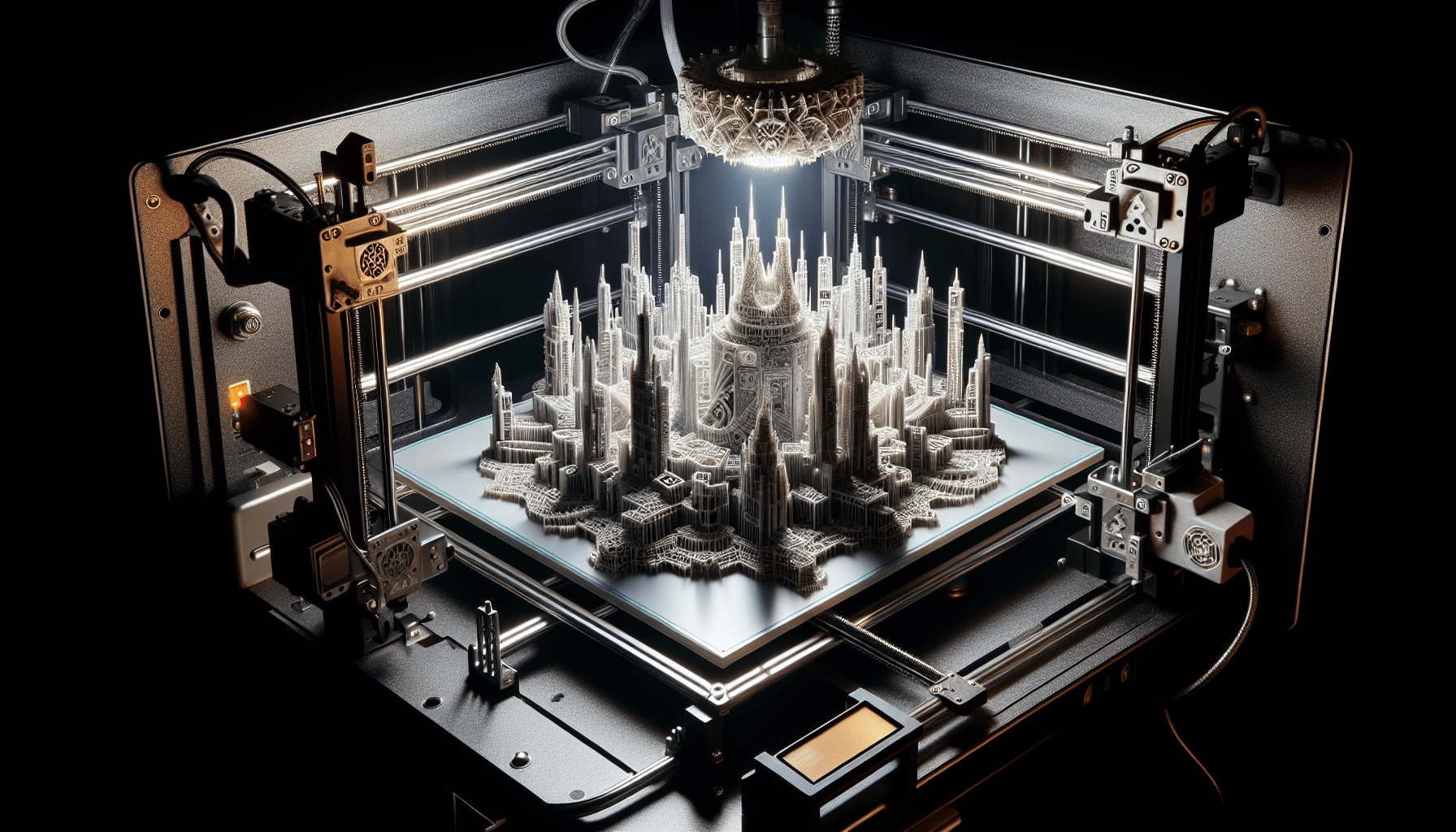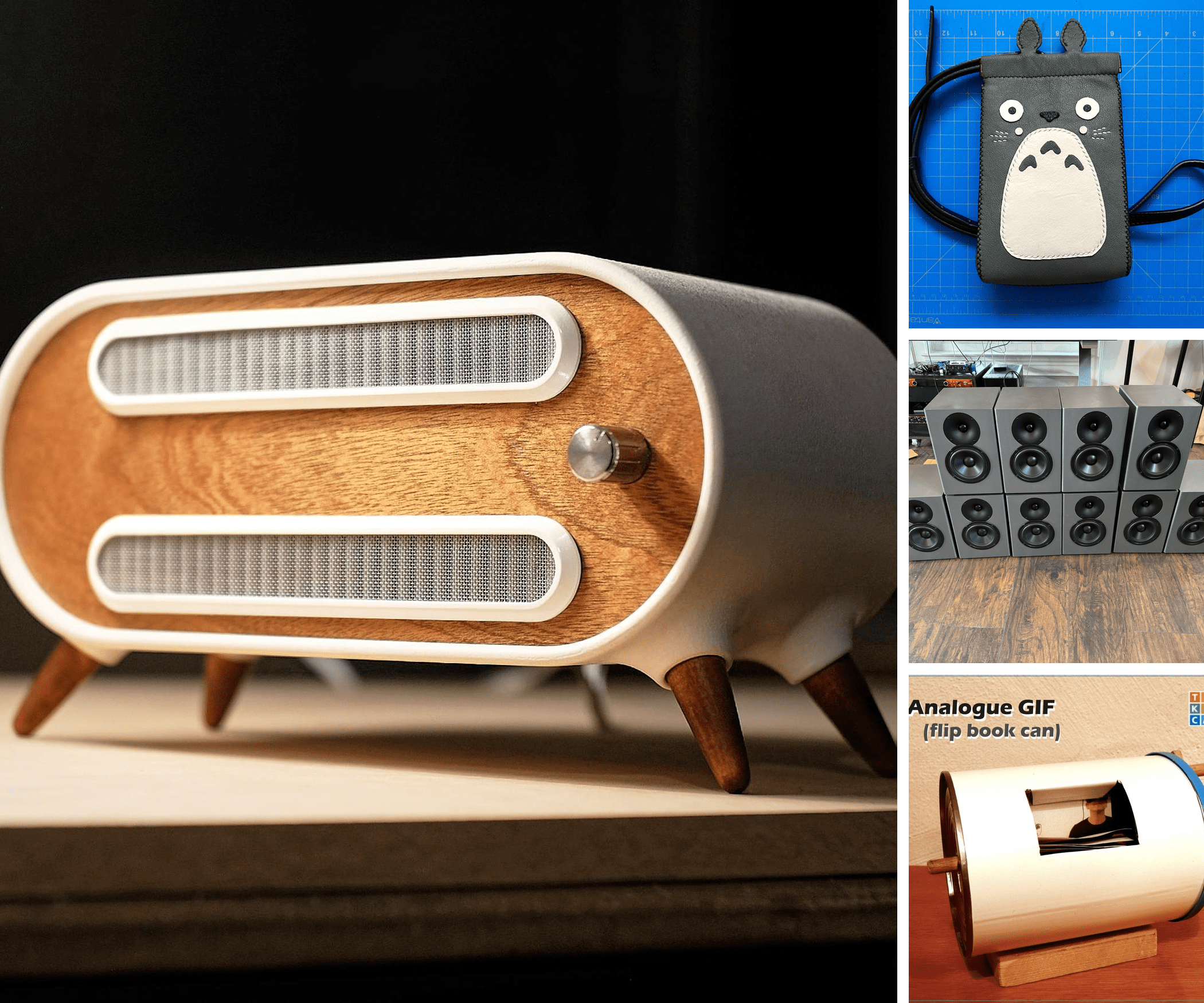Anycubic Kobra S1 Combo 3D Printer, Multi-Color 3D Printer High Speed Max 600mm/s High Precision, Core XY Stable Structure Ultra-Quiet Printing Anycubic App One-Click Printing 250 * 250 * 250mm
$779.99 (as of May 29, 2025 10:56 GMT +00:00 - More infoProduct prices and availability are accurate as of the date/time indicated and are subject to change. Any price and availability information displayed on [relevant Amazon Site(s), as applicable] at the time of purchase will apply to the purchase of this product.)In the video “5 Big Mistakes Beginners Make with Resin 3D Printing” by Edward Peak, he shares valuable insights that he wishes he knew when he started his printing journey. Edward emphasizes that you don’t need to clean your resin tank after every print, as it will only waste time, resin, and damage the fep sheets. Instead, he suggests cleaning the tank only if a print fails or if there’s an obvious issue, and leaving the resin in the tank for extended periods as long as it’s stirred and heated properly before printing. Moreover, Edward advises against using isopropyl alcohol (IPA) for cleaning the fep sheet, as it clouds it up, and recommends using microfiber towels instead. He also highlights the importance of keeping the resin away from sunlight to avoid ruining prints and hardening the resin in the vat.
Overall, this video provides beginners with five essential tips for resin 3D printing, including not cleaning the tank after every print, avoiding IPA for cleaning the fep sheet, protecting the resin from sunlight, maintaining the right temperature, and properly leveling the plate. Edward Peak’s experience and insights will save newcomers time, money, and frustration in their resin printing journey.

Mistake 1: Cleaning the Resin Tank Too Frequently
As a beginner in resin 3D printing, you might think that cleaning the resin tank after every print is necessary. However, this is actually a common misconception. Cleaning the tank unnecessarily can waste your time, resin, and FEP sheets.
When you clean the resin tank after every print, you are essentially wasting resources. It takes time to clean the tank and can slow down your printing process. Additionally, it uses up more resin than necessary. Resin is not a cheap material, so it’s important to be mindful of its usage.
Moreover, frequent cleaning of the resin tank can cloud up the FEP sheets over time. The FEP sheet is a thin film that separates the resin from the LCD screen. When it becomes clouded, it can affect the quality of your prints. Therefore, it’s best to avoid cleaning the tank after every print unless necessary.
The only time you need to clean the resin tank is if a print has failed and there is something left in the tank that might damage the screen when the plate next comes down. Additionally, if you have accidentally dropped something into the resin or there is an obvious contamination, then cleaning the tank is necessary. Otherwise, if everything goes smoothly and the print is successful, there’s no need to worry about cleaning it up.
Furthermore, you can leave the resin in the tank for extended periods of time without any issues. Resin left in the tank, when properly stored, can last for months or even years. Just make sure to stir it up a little bit and heat it correctly before starting to print again. Resin does not go bad like perishable food items. So, there’s no need to constantly clean out the tank after every print.
By avoiding the mistake of cleaning the resin tank too frequently, you can save time, resin, and reduce unnecessary wear and tear on your printer.
Mistake 2: Using IPA for Cleaning
Using isopropyl alcohol (IPA) for cleaning the FEP sheet is another mistake that beginners often make. While IPA is commonly used for cleaning various surfaces, it can actually cloud up the FEP sheet and make it worse over time.
When you use IPA to clean the FEP sheet, you may notice that it becomes cloudy or hazy. This cloudiness can affect the quality of your prints and make the FEP sheet less effective in separating the resin from the LCD screen. Over time, continuous use of IPA can deteriorate the FEP sheet, leading to the need for frequent replacements.
Instead of using IPA, there is a recommended method for cleaning the FEP sheet without clouding it up. This method involves using a microfiber towel. Cut the microfiber towel into small chunks and gradually wipe down the FEP sheet until it is clear and clean. This method eliminates the need for IPA and prevents any potential damage to the FEP sheet.
By avoiding the use of IPA and opting for the microfiber towel method, you can ensure that your FEP sheet remains in good condition and prolong its lifespan.
Mistake 3: Exposing Resin to Sunlight
When starting out with resin 3D printing, you may not realize the importance of keeping your printer away from sunlight. Sunlight can actually have detrimental effects on your prints and the resin itself.
Exposing resin to sunlight can ruin prints and cause the resin to harden prematurely. This can result in failed prints and wasted materials. Additionally, the resin can become difficult to remove from the vat, further adding to the frustration and time wasted.
To prevent these issues, it’s crucial to keep your printer away from sunlight and store it in a shaded area. Treat your 3D resin printer like a vampire and keep it in a dark corner to avoid any exposure to sunlight. By doing so, you can ensure that your prints come out as intended and avoid unnecessary problems caused by sunlight.
Furthermore, sunlight can also affect the cleaning process. If you clean up your prints in an area exposed to sunlight, the resin can quickly harden, making it challenging to remove from the surfaces. Therefore, it’s important to consider the lighting conditions when choosing your workspace for resin 3D printing.
By being mindful of sunlight exposure and controlling the environment in which you operate your printer, you can achieve more successful prints and avoid unnecessary frustrations.
Mistake 4: Neglecting Temperature Control
Temperature is a crucial factor in the success of resin 3D prints. However, beginners often overlook the importance of temperature control, leading to issues with their prints.
Proper temperature regulation is necessary for resin curing and achieving the desired print quality. When the temperature is too low, the resin may not cure properly, resulting in undercured prints. On the other hand, when the temperature is too high, the resin may cure too quickly, leading to overcured prints or even damage to the LCD screen.
To avoid these problems, it’s recommended to use methods to regulate the temperature of your printing environment. One method is to use a fermentation belt, which can be wrapped around the vat to provide a consistent heat source. This is especially useful if you live in colder climates or have a metal vat that conducts heat poorly.
If you have a plastic vat, another option is to use a space heater near your printer to maintain a suitable temperature. By controlling the temperature, you can significantly improve the success rate of your prints and avoid wasting resin.
Neglecting temperature control is a common mistake among beginners, but by implementing these methods, you can ensure optimal curing and achieve better results.

Mistake 5: Improper Plate Leveling
Proper plate leveling is crucial for successful resin 3D prints. However, many beginners struggle with this aspect and make the mistake of not paying enough attention to it.
Leveling the plate correctly ensures that the first curing layers adhere to the build plate properly, resulting in accurate and well-formed prints. If the plate is not leveled correctly, it can lead to issues such as failed adhesion, warped prints, or misaligned layers.
To avoid these problems, it’s essential to follow tutorials and use proper techniques for plate leveling. There are many resources available, including tutorial videos, that can guide you through the process step by step.
One effective method for checking plate leveling is to pull at each corner of a piece of paper placed between the plate and the screen. If the paper doesn’t move, it indicates that the plate is properly leveled. However, if the paper moves, it means that the plate needs to be adjusted.
By taking the time to level your plate correctly and following proper techniques, you can greatly increase the chances of successful prints and minimize the risk of wastage.
Mistake 6: Incorrect FEP Tightness
The tightness of the FEP (Fluorinated ethylene propylene) film in the vat is another aspect that beginners often overlook. Incorrect FEP tightness can lead to issues during the printing process.
It’s important to tighten the FEP in the vat correctly to avoid problems such as leaks, print failures, or misaligned layers. Different printers may have varying requirements in terms of FEP tightness, so it’s crucial to consult your printer’s manual or manufacturer’s instructions for specific guidelines.
For some printers, tightening the FEP as tight as it will go on the vat is the correct tightness. However, this may not be the case for all printers. To determine the correct tightness, you can use a spectrometer on your phone to measure the frequency of the FEP when lightly tapped with an object. Adjust the tightness until you achieve the desired frequency, which may vary depending on your printer model.
By ensuring the correct tightness of the FEP in the vat, you can prevent potential issues and improve the overall quality of your resin 3D prints.

Mistake 7: Not Researching 3D Printing Techniques
As a newcomer to resin 3D printing, it’s essential to invest time in learning about the various techniques involved. Many beginners make the mistake of not conducting thorough research, which can lead to unnecessary mistakes and frustrations.
There are numerous resources available, including tutorial videos and online forums, where you can learn about different printing techniques, troubleshooting common issues, and optimizing your workflow.
By watching tutorial videos, you can gain valuable insights and tips from experienced printers. These videos can help improve your printing skills and reduce the risk of making avoidable mistakes. Additionally, participating in online forums and communities allows you to connect with other 3D printing enthusiasts who can offer guidance and support.
Taking the time to research and learn about 3D printing techniques can make a significant difference in your resin 3D printing journey. It equips you with the knowledge and skills necessary to overcome challenges and achieve successful prints.
Mistake 8: Using Cheap Shop Cloths for Cleaning
Using cheap shop cloths for cleaning can be another mistake that beginners make in resin 3D printing. While shop cloths may seem like a cost-effective option for cleaning, they can leave residue on the printer and cause unnecessary issues.
Cheap shop cloths often contain loose fibers or particles that can transfer onto the printer surfaces during cleaning. These residues can interfere with the print quality or even affect the functionality of the printer components. Additionally, the transfer of particles may introduce contaminants into the resin, leading to failed prints.
To avoid these problems, it’s recommended to invest in quality cleaning materials specifically designed for resin 3D printers. These materials are lint-free and provide a gentle yet effective cleaning surface. By using high-quality cleaning materials, you can ensure a clean and residue-free printer, reducing the risk of print issues.
Mistake 9: Not Following Manufacturer’s Instructions
Perhaps one of the most critical mistakes beginners make is not following the instructions provided by the printer manufacturer. Every resin 3D printer model has its own specific guidelines and settings, and deviating from them can result in incorrect settings and failed prints.
Manufacturer’s instructions typically include details on optimal print settings, resin compatibility, maintenance procedures, and troubleshooting steps. By disregarding or neglecting these instructions, you run the risk of encountering unnecessary problems and potentially damaging your printer.
To avoid these issues, it’s crucial to thoroughly read and understand the manufacturer’s instructions before operating your printer. Take the time to familiarize yourself with the recommended settings, maintenance requirements, and any specific precautions.
Following the manufacturer’s instructions ensures that you maximize the performance of your printer, minimize the risk of errors, and ultimately achieve successful resin 3D prints.
Conclusion
Resin 3D printing can be an exciting and fulfilling hobby, but it’s important to be aware of the common mistakes that beginners often make. By avoiding these mistakes, you can save time, resin, and money, and improve your overall printing experience.
Remember that cleaning the resin tank too frequently is unnecessary and can waste resources. Avoid using IPA for cleaning, as it can cloud up the FEP sheet. Protect your printer from sunlight to prevent print issues and resin hardening. Pay attention to temperature control for optimal curing. Ensure proper plate leveling and correct FEP tightness. Invest time in researching 3D printing techniques to enhance your skills. Use quality cleaning materials instead of cheap shop cloths. And always follow the manufacturer’s instructions for optimal printing results.
By taking these precautions and being mindful of these mistakes, you can set yourself up for success in resin 3D printing. Enjoy your printing journey and create amazing resin prints!
A quick video that lists a few things you wish you knew at the beginning of your resin 3D printing journey. Please note that the advice given is based on using anycubic eco grey resin, so results may vary if you use a different one.
It’s important to note that leaving resin in the tank for extended periods can result in a film building up on everything due to the fumes curing. While I personally haven’t experienced this, I respect the wisdom of my viewers.
Feel free to check out my 3D print files on this link: My 3D Print files











